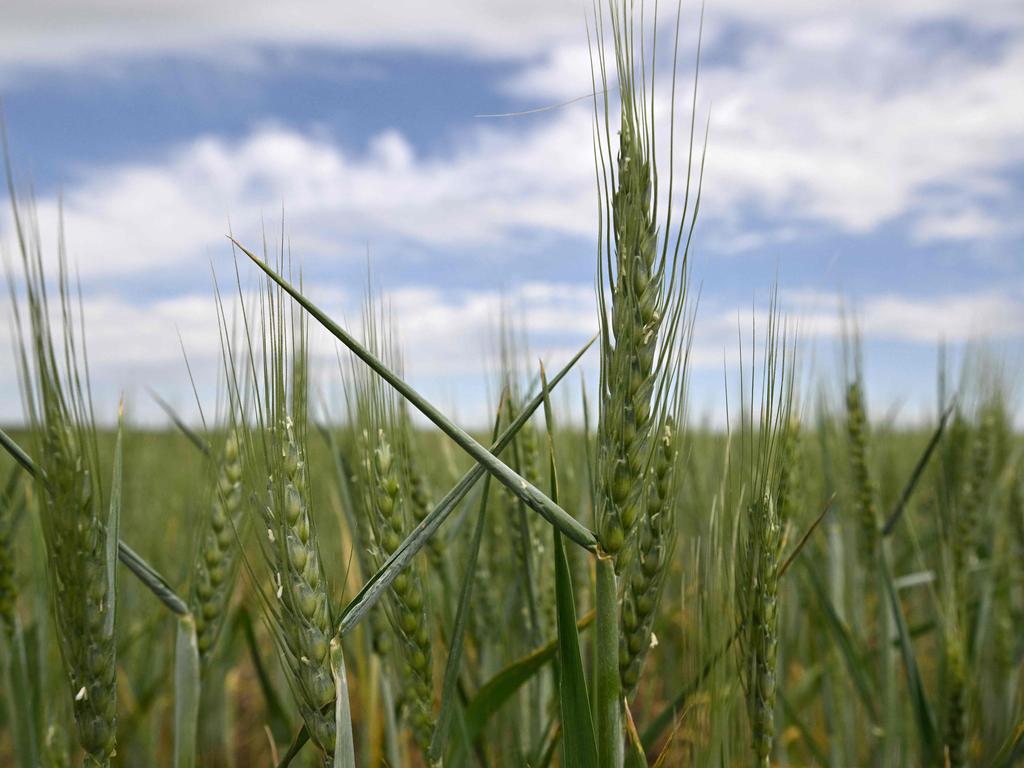Aussie wheat boom out of world’s reach due to supply chain difficulties
Supply chain difficulties will limit Australia’s ability to meet the shortfall in the global wheat market left by the Ukraine invasion, despite predictions of a third bumper crop.

Supply chain difficulties will limit Australia’s ability to meet the shortfall in the global wheat market left by the Russian invasion of Ukraine, despite two record crops in a row and a predicted bumper crop next financial year.
Sanctions on Russia and the blockade of Ukrainian wheat ports mean about 25 per cent of the 190-million-tonne global wheat trade will not make it to market, leaving some countries desperately short and prompting fears of a food crisis.
But logistic issues in getting Australia’s record crops on to ships, and high freight costs, have limited the role the country can play in picking up the shortfall in global trade.
The booming price of Australian wheat, which typically supplies about 10 to 15 per cent of the global market, also means poorer countries that have relied on Russian prices cannot afford to buy it.
Australia typically exports about 17.6 million tonnes of wheat a year but this financial year shipped a record 26 million tonnes off a record harvest above 36 million tonnes.
Farmers have planted about 14 million hectares this season and favourable growing conditions have led analysts to predict a similar export volume for 2022-23.
“We’ve got both carryout that is higher than normal as we approach the next season, plus a favourable-looking harvest ahead,” Rabobank senior commodities analyst Cheryl Kalisch Gordon said. “So that does mean we’re in a good position to assist. But is it enough to change the global picture? No.”
Global supply issues are further complicated by lower production levels in the northern hemisphere because of dry conditions affecting harvests in the US and France. The federal government forecast global wheat production to fall from 780 million tonnes in 2021-22 to 776 million tonnes in 2022-23.
In mid-May, India limited exports over fears of scarcity.
Australian exports have been able to help meet shortfalls in Southeast Asian countries typically reliant on Russia and Ukraine, but poor infrastructure after years of drought, stretched demand for trucks and ships and limited port capacity have made it difficult to export further afield.
East coast grain trader GrainCorp has been working to manage logistic issues brought on by the pandemic and the war in Ukraine.

“Off the back of two consecutive record harvests in excess of 30 million tonnes on the east coast of Australia, the industry is experiencing unprecedented pressure to move our growers’ grains to market,” corporate affairs manager Jess Simons said. “This has created an extraordinary export task, with the bulk export supply chain running at up to 250 per cent of its average capacity, according to the recent ACCC Bulk Ports Monitoring Report.
“The biggest constraint on our supply chain is the transport of grain to the ports via rail and road, as well as the current lack of supply of skilled labour across all industries, including truck drivers and train drivers.”
Rising costs for labour and inputs such as fertiliser, also pushed up by the invasion, have likewise contributed to production risks for Australian farmers.
Graingrowers chair Brett Hosking, who has about 1000ha of wheat planted on his mixed farming business in Quambatook, Victoria, said the geopolitical activities had been noticed on farms around the country.
“It’s made a bit of a difference to planting intentions this year,” Mr Hosking said. “We’ve seen a lot of growers going out there using the various tools available to manage price risks.
“They’re taking out things like options and swaps and even forward contracting to give them some level of price protection for the upcoming harvest.”
Mr Hosking said supply chain disruptions had left some farmers having to drive their own trucks to transport their grain to market.







To join the conversation, please log in. Don't have an account? Register
Join the conversation, you are commenting as Logout